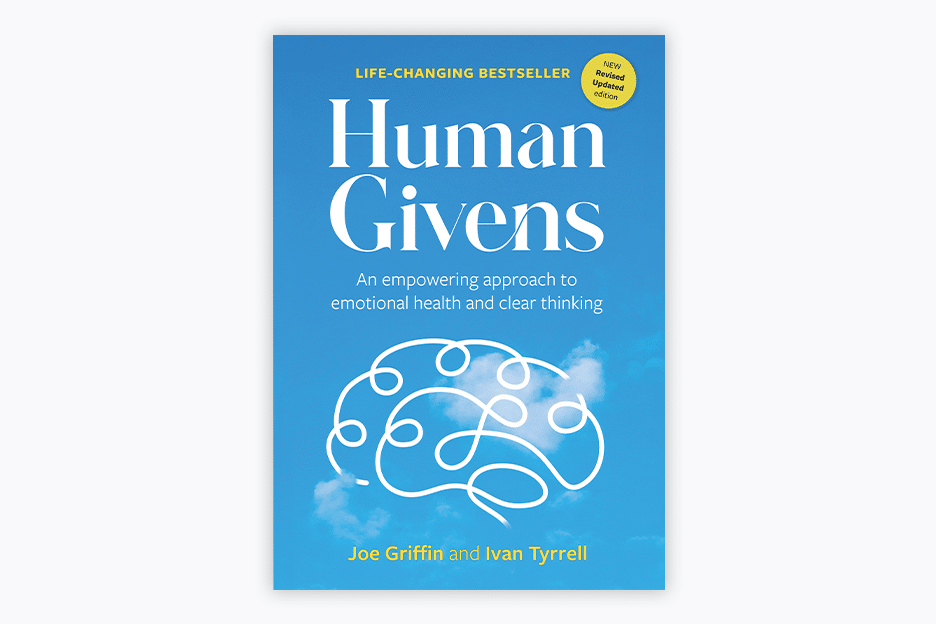What’s different about the HG approach to therapy?
People often ask how the human givens approach differs from other therapeutic approaches. The Professional Standards Authority did too when they first assessed the HGI’s therapists register for accreditation; this is what we told them.
The human givens approach to psychotherapy and counselling – which was one of the first to actively draw on neuroscientific findings to inform therapeutic practice – is a brief, solution-focused approach which helps people feel better and move on in their lives as quickly as possible. At its heart is the understanding that, when a human being’s essential emotional needs are met and their innate mental resources are being used correctly, they will be emotionally and mentally healthy.
The results revealed that emotional well being significantly improved ... and this improvement was maintained up to and including one year post referral (1)
Our essential psychological needs, which have been identified over decades of work by health and social psychologists, include our needs for autonomy, a sense of control, security, connection to others, attention, achievement, status and meaning. Our innate resources – also a given of being human and much studied by neuroscientists – include our abilities to learn from experience, plan, judge, imagine, relate one thing to another, empathise, develop a moral sense, remember, etc.
It is when our emotional needs are not being adequately met, or are being met in unhealthy ways, or when innate resources are damaged for any reason, or are unintentionally misused, that we develop undesirable mental states such as anxiety, anger, depression, addiction and psychosis. A common feature of all these states, for example, is the misuse of our imagination to conjure up worst possible or threatening scenarios.
The key difference
What makes the human givens approach different from other therapy approaches is that its therapists look to see what is missing, or being misused, in clients’ lives, with the aim of helping them find ways to better meet their needs.
For instance, someone who has been bereaved may seek to mask their sadness through drinking, and then try to mask the drinking by withdrawing from their usual activities and friendships, resulting in depression; similarly, someone who is laid off work with a back injury may, wrongly, become frightened to take any exercise and, as a result, not only lose companionship at work but cease to take part in previously enjoyed physical activities, resulting in increased physical disability, isolation and depression. While the symptoms of depression in such scenarios are important as guides, it is the learning of coping skills and making specific life changes that will shift the depression.
HG therapists also help clients to identify and overcome any barriers which may be preventing them from getting their needs met (such as unresolved trauma).
To do this – and to help with any other presenting problem – human givens therapists draw from a variety of tried and tested therapeutic methods (such as cognitive therapy, behavioural therapy, interpersonal therapy, solution focused approaches, motivational interviewing, reflective listening and hypnotherapy) as well as the latest neuroscientific findings and new insights derived from the HG approach which increase our knowledge of what it means to be human and our understanding of what people need to maintain emotional wellbeing.
Holistic, integrative and flexible
Thus, helping people to change unhelpful thinking styles (cognitive) will be just one part of a holistic process that also involves, commonly all in one session, giving psycho-education (eg. explaining the experience of anxiety and depression in a way that normalises it and takes the fear out of it – this includes an understanding of the role of dreaming in depression); helping clients take a different perspective on their situation (through the use of reframing, metaphor and storytelling); problem solving (helping clients recognise times when they are not experiencing problems, what is different about those times, and how they can build on that); teaching whatever skills are required (for instance social skills, communication skills, assertiveness skills); and rehearsing making desired changes successfully (through guided imagery).
Highly practical and forward-focused
It is a practical, forward-focused approach, which concentrates on mastery of skills and understandings that people can use in the future to move on in their lives, rather than concentrating on, and being stuck in, what went wrong in the past.
This is the case even if people have suffered horrific traumatising events and are suffering from flashbacks and/or PTSD – all human givens therapists are taught a safe and reliably effective, evidence-based method for detraumatising people, which in most cases works in one session.
Instead of being reliant on one ‘model’ of therapy, therefore, the human givens approach is fluid and flexible, making use of whatever techniques and approaches will best suit the particular client being worked with, and all within the guiding framework of helping clients meet missing emotional needs and use innate mental resources in the healthiest ways possible.
Effective and empowering
The success of this fluidity of approach is evidenced by a growing body of research findings – including those from a study which assessed outcomes for mild to moderately depressed people randomly allocated to receive either human givens therapy or ‘standard care’, such as counselling or medication in participating GP practices in an area of considerable socio-economic deprivation in Staffordshire.
“The results revealed that emotional well being significantly improved during the first four months following referral for both groups and this improvement was maintained up to and including one year post referral. Human givens therapy was found to be shorter, lasting 1–2 sessions in duration compared to standard treatment which lasted on average 4 sessions,” the authors wrote.1
Clients also leave therapy with greater resilience against future setbacks, as they have increased understanding of what they need to maintain their emotional health and practical ways in which to do so.
- Fully qualifying as a human givens practitioner enables you to appear on a professional register, which is accredited in the UK by the Professional Standards Authority for Health and Social Care (PSA)
- The HG Diploma is a recognised part of the SCoPEd national training framework for psychotherapy and counselling, with approved routes for its graduates to transition through the framework’s 3 columns
- Graduates of the Diploma often go on to achieve remarkable things, you can read about some of them here >
1. Tsaroucha, Anna, Kingston, Paul, Walton, Ian, Stewart, Tony and Corp, Nadia (2012). Assessing the effectiveness of the ‘‘human givens’’ approach in treating depression: a quasi experimental study in primary care. Mental Health Review Journal, 17, 2, 90–103.





